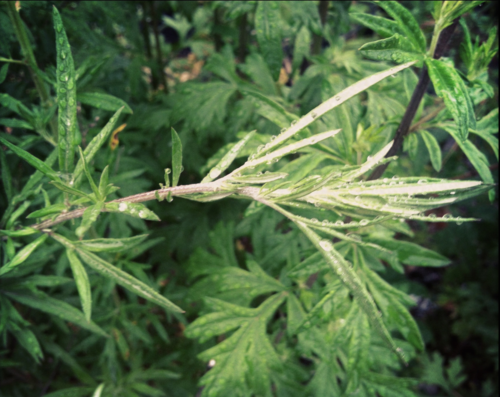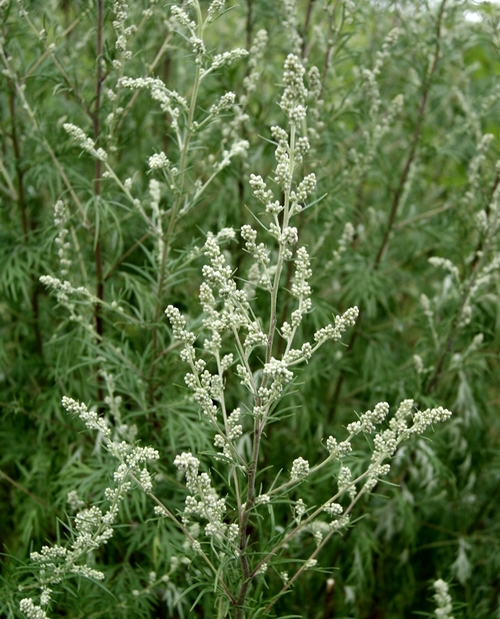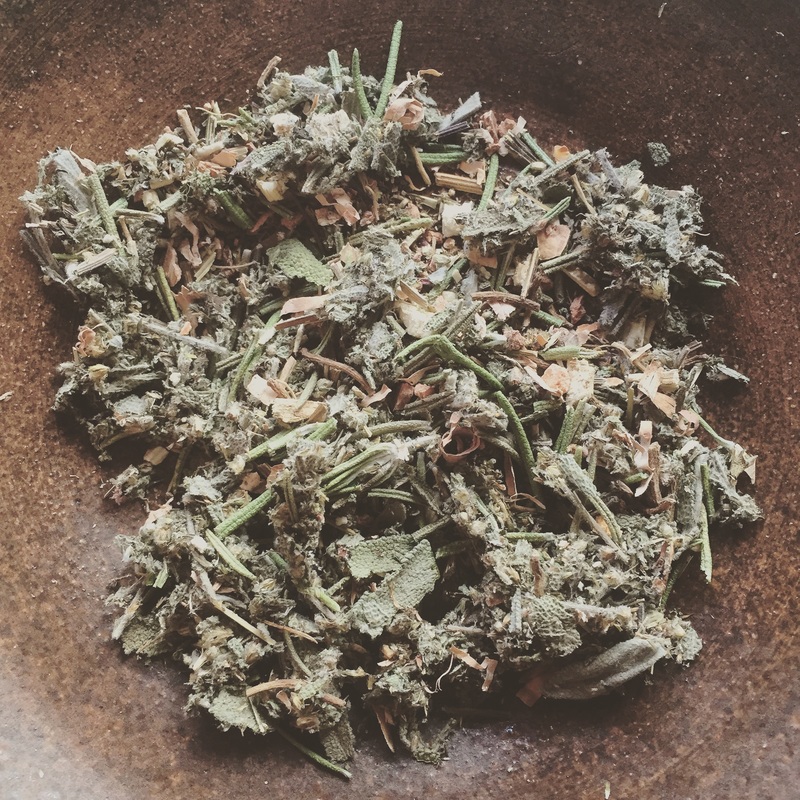|
When I first moved to Boston a decade ago I felt like a country girl in the big city. I’d traveled and lived in several places before, but had never before set down roots in an urban environment. I was used to living amongst trees and woods, and wide-open spaces. Although I loved my new city home, I greatly missed natural open spaces, and forests, and wild places. So I found consolation in a different sort of wildness: in untamed, weedy plants that sprout up in the neglected areas of town. Of all of these – the dandelions, chickweeds, shepherd’s purses and burdocks that I came to know and love – mugwort (Artemisia vulgaris) was the one to capture me the most. When I first made acquaintances with this lovely creature I knew nothing of the plant, not even its name. I just loved the beautiful shape, tall stature, silvery leaves, and gracefulness as I observed mugwort swaying in the wind, or in the passing rumble of a train. I used to walk one particular route to work that always led me past a population of mugwort. It was an unpleasant and ugly stretch to walk through, full of trash and city grime, but the mugwort always provided a glimpse of beauty and grace with its silvery green glow. It felt like the mugwort was welcoming me to my new city, and whispered to me an important reminder: that I could find beauty wherever I looked for it. Upon delving deeper into my work with the herbs I discovered many things about mugwort that enamored me with the plant even more. I found out that it is a plant of ancient use and was known as the Mater Herbarum — the mother of all herbs. Mugwort was held sacred by various cultures and thought to be the oldest of plants. In particular it was believed to be a plant that offered protection to humans. It was once common to hang a sprig of mugwort over the doorway — or to burn it as an incense — to keep illness and evil spirits away from the home. Its botanical name Artemisia refers to the goddess Artemis, hinting at its divine origins. Named after the lunar goddess of childbearing and the wilderness, mugwort is steeped in much folklore about its healing virtues. It has traditionally held a powerful affiliation with the moon and was considered to be a prime herb for women. Artemisia vulgaris has been used to soothe the pain of childbirth as well as monthly menstrual cramping. It may also help to regulate the menstrual cycle to a normal, cyclical rhythm. Herbalist Matthew Wood says that mugwort will restore the injured female nature. Mugwort’s actions on the body are warming and slightly stimulating. As such it helps to increase circulation throughout the body and to remove stagnant blood (hence its use for the menstrual cycle). In Traditional Chinese medicine a related Artemisia species is made into moxa for use over stiff joints and cold, stagnant areas of the body. As for its stimulating properties, mugwort is well known for its ability to impart vivid dreams and to promote creative meditation. Many people will find that simply drinking a cup of mugwort tea before bed will have a marked effect on their dreams. Because of this property, however, avoid mugwort when you are trying to get a deep and restorative night’s sleep! I love what one of my favorite herbal writers, Judith Berger, has to say about this special plant. She says that regular use of mugwort “strengthens our ability to absorb intuitive information as we preserve an aspect of sharpness in our interaction with the complex, topside world.” In other words, mugwort helps us to enhance our intuition in order to better navigate daily reality.
Mugwort can be found growing in disturbed areas and along roadsides wherever humans reside. If you are harvesting the plant for internal use be sure to avoid collecting near traffic-laden roads, or in areas where the soil may be contaminated. Clip the tall stalks so that you are harvesting the upper third of the plant. The best time to collect mugwort is right before its very tiny flower buds open. Hang a bundle of the stalks upside down to dry. HOW TO USE MUGWORT: ➤ Use 1/2 to 1 tablespoon of dried herb per mug of hot water; let steep at least 10 minutes. Drink before bedtime to increase dreams. ➤ Infuse into vinegar to extract its rich mineral content (mugwort is high in calcium and magnesium) ➤ Infuse into oil to use for topical applications as a warming, stimulating remedy, for cold joints or for menstrual cramping Caution: As a uterine stimulant and emmenogogue, mugwort should not be used during pregnancy. MUGWORT DREAM TEA Here’s a lovely tea that I like to make after dinner to help wind down before bed-time, and to ease me into the dream world: 1 part linden 1 part lemon balm ½ part oat tops ¼ part mugwort small pinch of lavender Let steep for at least 15 minutes. Sip mindfully and breathe in the vapor of the tea, and see if you don’t have a very deep night’s sleep, with dreams that you remember the next day… One of my favorite books is Judith Berger's Herbal Rituals. Her beautiful words take the reader through a full year of herbal collecting and concocting, and each chapter focuses on the seasonal aspects of each month. I love what she has to say about November...
"According to the Celtic calendar, November is the first lunar month and belongs to the birch tree, the tree of beginnings. I find it important that the beginning time is situated at a moment when nature has ceased any outward signs of growth and has plunged its vitality underground. From nature's rhythm I learn that beginnings extend their tethers from an invisible core or seed that germinates best in the ground of dormancy and otherworldly visions which accompanies this month. The dropping temperatures encourage our bodies to rest, to enter the realm of sleep, so that the unconscious can send us information for our growth through the messenger of our dreams...." - from Judith Berger's Herbal Rituals, November In honor of the birch tree of beginnings, and of this season of rest and dreaming, I created this tea blend. Drink it before bed and enter sleep with the intention of remembering your dreams the next day... 1/4 to 1/2 Tblsp. Birch twigs/bark (or birch leaves if you have them) 1/2 Tblsp. Valerian root 1 Tbsp. Mugwort leaves 1 Tblsp. Sage leaves 1 Tblsp. Rosemary leaves Blend together all the herbs. Steep one heaping spoonful of the tea in a cup of hot water, for at least 10 minutes. Strain out the herbs, light a candle, and sip quietly. This recipe will make enough for 4-5 servings. |
Categories
All
Archives
January 2022
|


